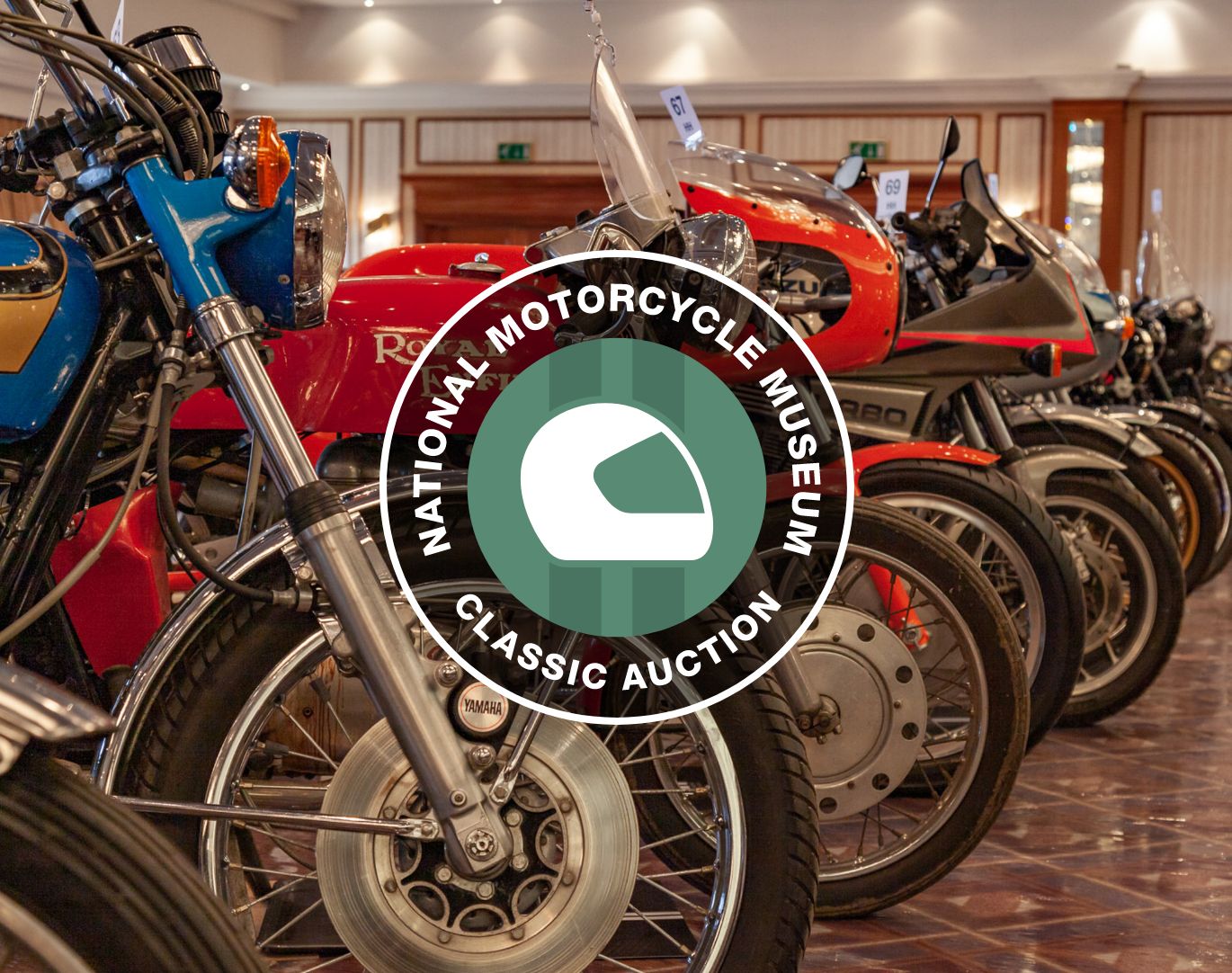

Classic cars fire the imagination but none as much as the unrestored ‘barn find’ which emerges from an old farm barn, from behind bricked up garages to protect them from the Nazis, out of lakes and from the midst of African jungles. They are the pot of gold at the end of the petrolhead’s rainbow.
31/07/2021
Last February, a 1961 Ferrari 250 GT SWB California Spider, once owned by actor Alain Delon but stored in conditions of great secrecy for many decades on a private French estate, achieved €16,288,000 Euros (with buyer’s premium) at a Paris sale – a new world record for the type. The car required a complete restoration, yet only a few months later was seen in its original barn-find look of dented bodywork and dust on the manicured grass of the Pebble Beach Concours d’Elegance.
At the same Paris auction an American collector paid €1,702,000 Euros for the severely crash-damaged and rust-eaten 1949 Talbot Lago T26 Grand Sport – nearly three times its upper estimate.
Meanwhile in the UK, in recent weeks a 1929 Bentley 4 1Ž2 Litre Sports Saloon sold for £695,900 including premium. It was estimated at £150k to £250k. The barn-find classic car with a seized engine was complete but needed either a total restoration or, more likely, sympathetic recommissioning to complete it as a ‘preservation class’ runner. The price achieved is probably far more than a fully working example would have raised, such is the enthusiasm for the genre.
In 2006, American barn-find collector and ace car sleuth Tom Shaughnessy bought a rusty but complete chassis in an Illinois eBay garage sale for $26,912. It turned out to be a 1952 Ferrari 340 America Spider, a believed lost, but genuine ex-Le Mans car worth many $millions.
Many exotic European racing cars found their way to far-flung regions of the world when no longer competitive. A 1955 Maserati 300S sports car, now worth £5m, was found in a jungle in Angola in the late 1980s, then successfully purchased for $700 and totally restored. It now lives in a collection in the USA.
Over the years H&H Classics have unearthed some memorable cars from barns and sheds all over the country.
Here are some of the memorable barn finds that have found their way to H&H Classics:
From dusty barn find to polished jewel: the most technologically advanced Pre WW2 British car for sale.
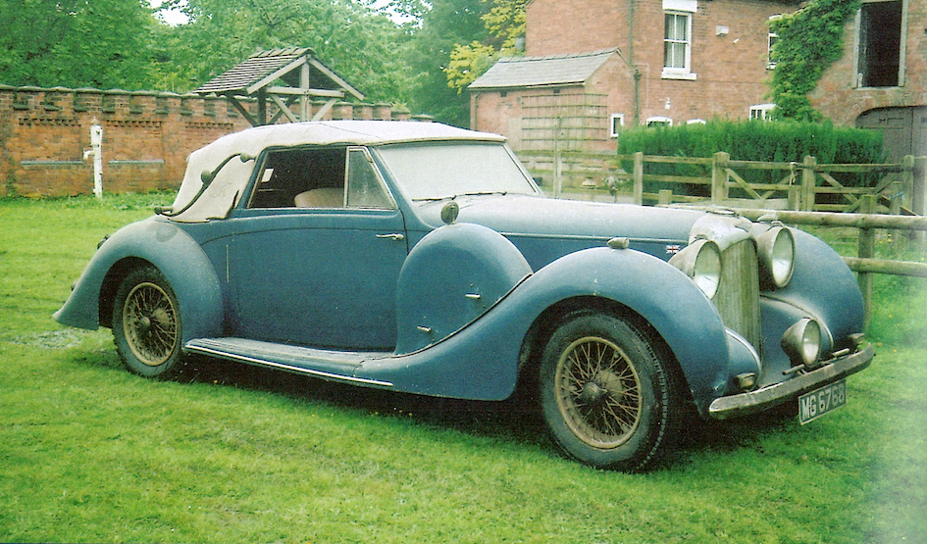
1939 Lagonda Barn Find Before Restoration
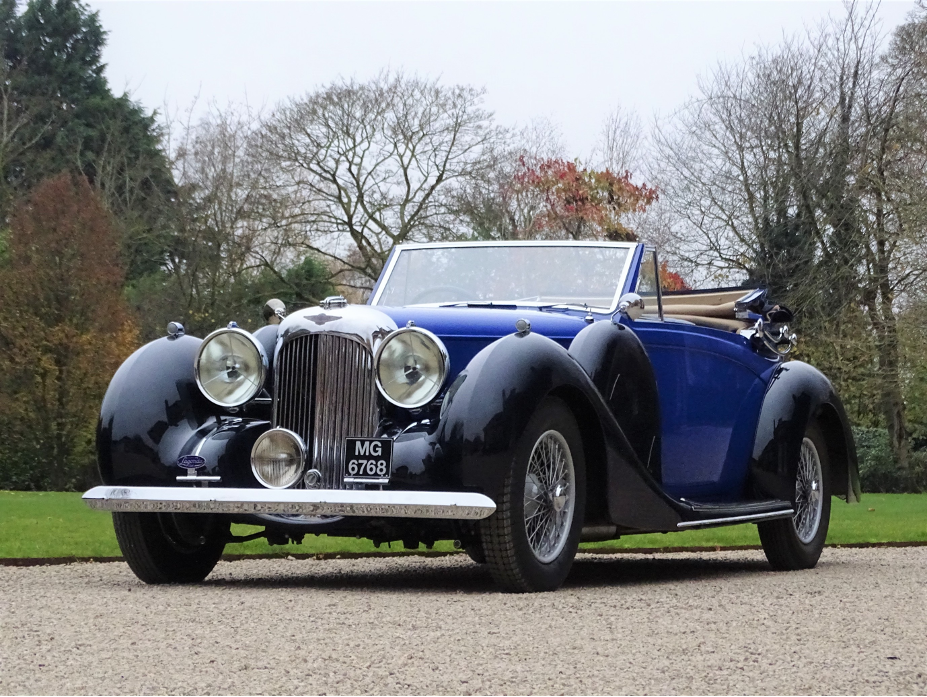
1939 Lagonda Barn Find After Restoration
This stunning pre-war 1939 Lagonda V12 Drophead Coupe with an estimate of £300,000 to £400,000 appeared at the H&H Classics sale at Duxford on March 18th 2020.
It's quite possibly the finest example of a barn find and a real jewel for any collection. It was unearthed after forty years' barn storage and subsequently treated to an exhaustive 'chassis up' restoration with input from the likes of LMB Racing, Bishop Gray and Mel Cranmer.
H&H Classics sold the then unrestored car in 2006 covered in a protective wax to prevent the brightwork from corroding. It had been stored away for 40 years and made £82,000 against a pre-sale estimate of £40,000 - £50,000. Fresh from its dry hiding place, it sported the original push-button radio, the correct period lights and wire wheels and showed just 50,112 miles on the odometer. Finished in blue with brown leather upholstery, the car had remained with the same family since the mid ‘60s. The brightwork still showed traces of the wax that was applied at the time and the hood had never been lowered in the 40 years that the family owned it! The car was complete and ripe for restoration. Indeed, despite its lengthy lack of use, the engine still turned freely.
This Lagonda was the most technologically advanced motor car to come out of Britain pre-WW2. A Lagonda press release from August 1937, states: 'Of the half-dozen patrician motor cars still remaining on the world market, none ever inherited such a rich patrimony of design as the 12-cylinder Lagonda. The new car is no mere recapitulation of a good - but tired - design in terms of 1937. It is a new-born car, unrelated to any yet on the road - here or on the Continent. New ideals of performance were set up and these have been exceeded in the sheer versatility of the new car. Such is the 12-cylinder Lagonda - a car destined to rank from now on, among the greater names in motoring history'.
'In making an evaluation of the better British cars, the Lagonda V12 certainly must be considered an excellent design and one that contributed to raising the state of the art - not forgetting, of course, that it probably should be considered W O Bentley's masterpiece'. (Road & Track, October 1978).
The most technologically advanced and ambitious motorcar to come out of Britain pre-WW2, the Lagonda V12 had few international peers. Bugatti's Type 57 may have boasted a similarly exotic overhead camshaft powerplant but its chassis layout was positively archaic by comparison. Mercedes-Benz's 540K could match the British car's power output but only when its refinement-compromising supercharger was engaged, while Hispano-Suiza's J12 needed over twice the cubic capacity to develop an extra forty horsepower! A landmark design, the Lagonda will forever be notable as the world's first production car to feature an overhead camshaft V12 engine.
Debuting in prototype guise at the October 1936 Olympia Motor Show (but not officially launched for another year), the Lagonda V12 was engineered by a crack team of ex-Rolls-Royce employees including W.O. Bentley, Stuart Tresillian and Charles Sewell. A 'clean sheet' design that aimed to marry limousine refinement to sportscar performance, it was based around a substantial cruciform-braced box-section chassis. Boasting sophisticated unequal-length wishbone independent front suspension actuated via unusually long torsion bars and special shackle pins that helped obviate side thrust on its semi-elliptic rear leaf-springs, the newcomer also incorporated a Marles steering box, Salisbury hypoid rear axle and twin master cylinder Lockheed hydraulic drum brakes. Singularly advanced, the model's aero-engine inspired 60? V12 featured overhead camshafts (one per bank), twin SU carburettors, a combined duplex-chain / gear-driven timing system and Lanchester-type vibration damper. Displacing 4480cc (bore 75mm x stroke 84.5 mm) the unit was quoted as developing 180hp @ 5,500rpm. Available in 10'4", 11'0" and 11'6" wheelbase lengths, the Lagonda flagship was among the fastest cars of its generation. Though, the provision of a centre-change four-speed manual gearbox (with synchromesh on the top three ratios) and conventional pedal layout made it surprisingly easy to drive.
Beguiled by in-house stylist Frank Feeley's marvellous creations which seemed to capture the very spirit of the age, most customers opted for factory coachwork (though, outside commissions were still welcome). Not content with the publicity garnered by Earl Howe's record breaking Brooklands run aboard a Standard Short Saloon on October 10th 1938 which saw the titled racer lapping at up to 108.27mph and average 101.5 miles for the hour (despite an unscheduled pitstop), Lagonda proprietor A.P. Good commissioned W.O. Bentley to mastermind a V12 assault upon the 1939 Le Mans 24-hour race. Given less than six months in which to complete the project, Bentley was relentless in his pursuit of more horsepower, lower weight and better aerodynamics. Still retaining a 10'4" wheelbase, the resultant racer was theoretically capable of 140mph. Governed by a strict protocol that prized finishing above all else, the two V12s entered for the June 17th-18th race duly crossed the line in third and fourth place overall. Interestingly, their average speeds of 83.61mph and 83.35mph respectively would have been sufficient for outright victory in either the 1938 or 1949 events. Of the 190 Lagonda V12s produced between 1938 and 1940, a mere 100 are thought to have survived to the present day.
According to information kindly supplied by the Hon. Registrar of The Lagonda Club Mr Arnold Davey, chassis number 14092 was first registered on June 12th 1939 to a Mr A.C.W. Norman of Montague St, London W1. A factory-bodied Drophead Coupe built on the short (10ft 4in) wheelbase, its guarantee was issued three days later. Fitted like many of its siblings with a replacement Sanction 2 engine under warranty (V12 151 being swapped for V12 59), 'MG 6768' was purchased by its second keeper, a Mr Withair of Cheyne Place, London SW3 in November 1945. Looked after by Davies Motors of Staines until 1952 (the same year that Mr Davies - a former Lagonda service manager - curtailed his role as the factory's semi-official maintenance depot for prewar cars), the V12 subsequently migrated to Bognor Regis (Mr Dewhurst) and Middleton-on-Sea (Mr Sanderson) before being bought by the Hollinshead family who barn stored it for forty years.
Still covered in protective wax when purchased by Alfred Hill MBE via our July 2006 Buxton auction, the Lagonda soon found itself being disassembled for the first time since leaving the Staines factory. Thoroughly overhauled with new parts sourced from Farndon Engineering (crankshaft / con-rods), Arias (forged pistons) and LMB Racing (camshafts), the engine was also treated to an unleaded fuel conversion, replacement timing chains and fresh bearings etc not to mention a refurbished starter motor and dynamo. Photos on file show that the suspension, brakes, fuel system and wiring were all rejuvenated, while attention was paid to the ash frame, alloy bodywork, G10 four-speed manual gearbox and steering joints too. Gaining a new crown wheel and pinion and differential bearings courtesy of LMB Racing, the Lagonda had its radiator and hubs reconditioned by CPA Services and Richard Bros respectively.
Retrimmed in Dark Blue leather with a matching mohair hood by J. Krych, the interior also gained a European walnut dashboard and door cappings. Following a bare metal respray, the Drophead Coupe had its brightwork refinished by S&T Electro-Plate. Sadly, Mr Hill died before 'MG 6768' had been properly run-in or debugged. Thankfully, the vendor whose garage has hosted various important WO Bentleys, Bugattis and front-engined Grand Prix cars proved an ideal new owner. Discovering that a huge amount of man hours and money had gone into the project, he set about fine tuning the result. Thus, the ingenious mechanism which secures the door in two planes is fully functional, the 'disappearing' rear luggage rack works as it should and literally every 'nut and bolt' underneath has been checked / tightened. A seasoned racer, the vendor is a firm believer in preparation and even a cursory examination shows that the Lagonda has been suitably gone through and set-up.
Starting readily upon inspection, idling happily and accelerating in a decidedly post-WW2 fashion, the V12 remains every bit as impressive as it must have done eighty odd years ago. Collectors have traditionally been wary of W.O. Bentley's masterpiece but we believe 'MG 6768' to be among the very best examples available. Drawing on the expertise of BishopGray, LMB Racing and Mel Cranmer, the Drophead Coupe is a singularly imposing and impressive machine. Decidedly undervalued when compared to its Bugatti and Mercedes-Benz counterparts, the Lagonda is offered for sale with a DVD chronicling different stages of the restoration, continuation buff logbook, three files of invoices and numerous photographs. A jewel for any collection.
Totally original 1962 E-Type Jaguar emerges from its Moray barn
H&H Classics offered this absolute gem at its Buxton, Derbyshire, sale. A 1962 E-Type Jaguar, which has been in storage for 35 years in Moray, Scotland. It had just 66,551 miles on the clock. It was estimated to sell for £30,000 to £40,000 and made the perfect restoration project.
This delightful sleeping beauty is totally original in every way. The barn find 1962 3.8 E-Type coupe, with matching numbers, complete, heritage certificate, V5C, reg no 399 ELC was sold with NO RESERVE.
The dust-covered car was found in Moray, Scotland.
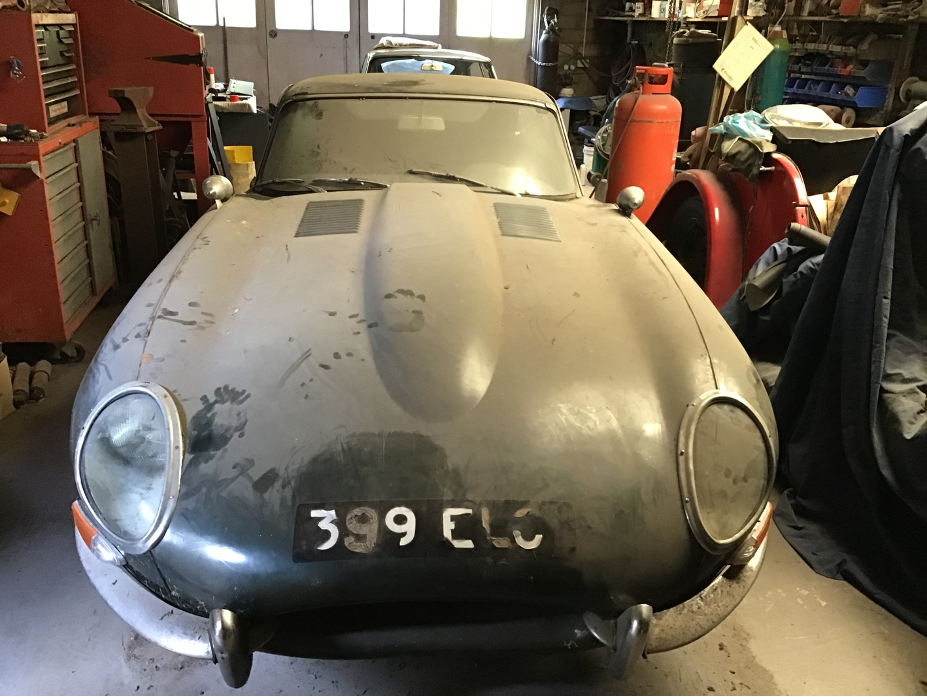
TOTALLY ORIGINAL 1967 MINI 850 DELUXE IN SAME FAMILY OWNERSHIP FROM NEW EMERGES FROM ITS GARAGE TO SELL FOR £15,525
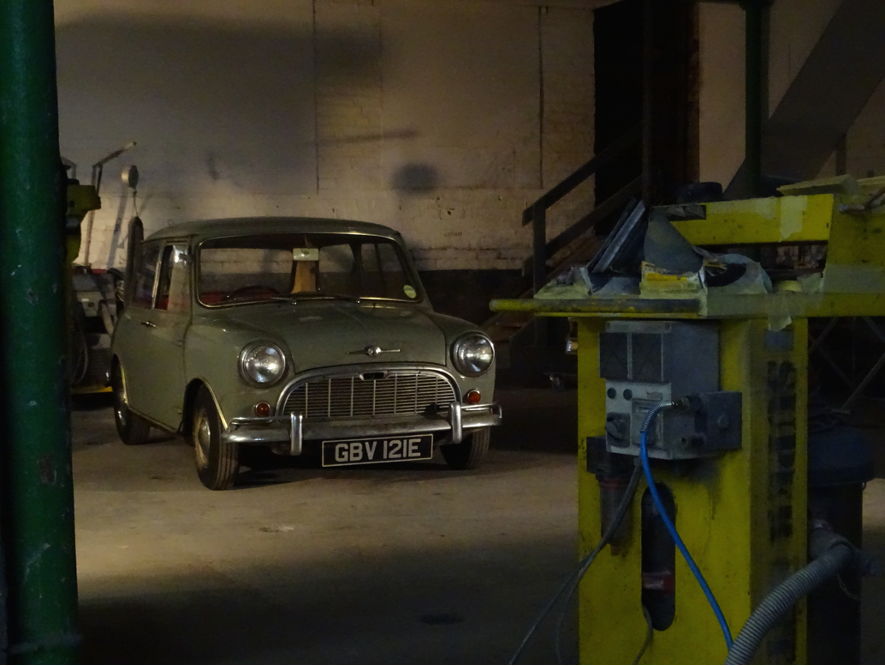
H&H Classics sold a 1967 Mini 850 deluxe, which had been in single ownership in Lancashire from new and in storage since 1983. It had just 36,000 miles on the clock. It was estimated to sell for £6,000-£10,000, but in fact sold for £15,525.
This delightful Mini was totally original in every way, it has never undergone any welding and its interior is like new. It comes with its original bill of sale, two keys and its handbook.
The vendor, son of the original owner, says: “My father purchased GBV121E brand new in 1967 for his early retirement. The car was used mainly for holidays; my parents loved touring the Highlands of Scotland as well as North Yorkshire. My father was diagnosed with ME in the early 80s. The Mini was very little used and in 1983 it was taken off the road. When my father was told he would never drive again he gave the car to me. It was sheeted and raised off the floor supported with wooden blocks under the sub frame to keep the weight off the suspension and wheels and never moved again until this year. So the car only ever had one driver.”
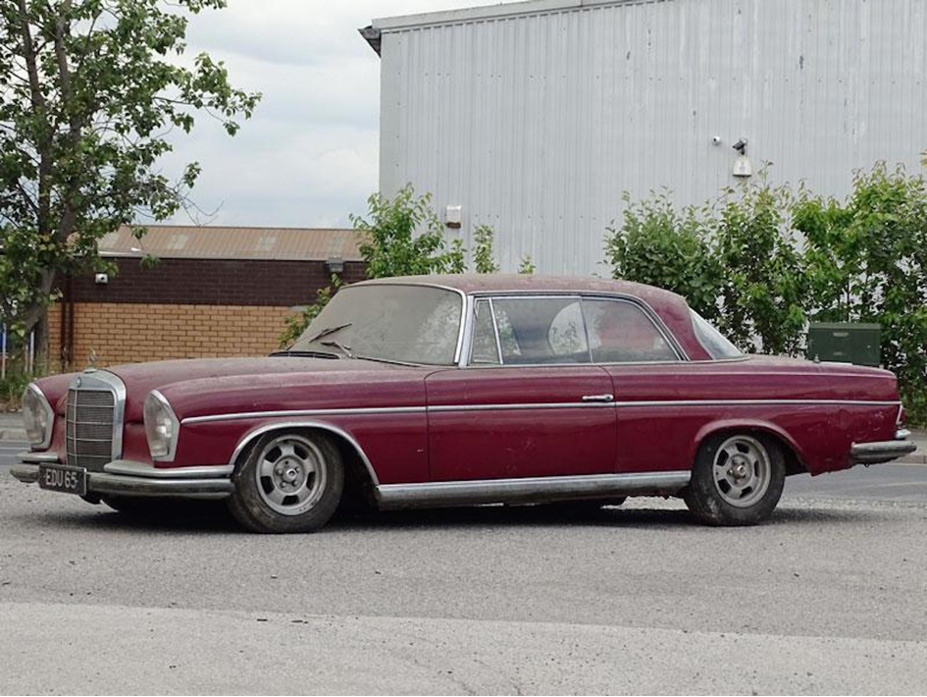
A 1965 Mercedes 300SE Coupe, that had been in storage in an underground garage in Manchester since 1981 sold with ‘No Reserve’ for £14,000. It was one of just 270 RHD models produced.
Introduced in mid 1959, the Mercedes-Benz W111 series was a natural progression from the 220 Pontoon. The new models were bigger inside and out and sported a greater abundance of brightwork; not to mention the finned rear wings which spawned the model's 'fintail' nickname. In addition to the four-door Saloon, the range comprised an elegant two-door Cabriolet and Coupe. The cars were very well appointed inside, being adorned with Mercedes textured leather and wood trimmings.
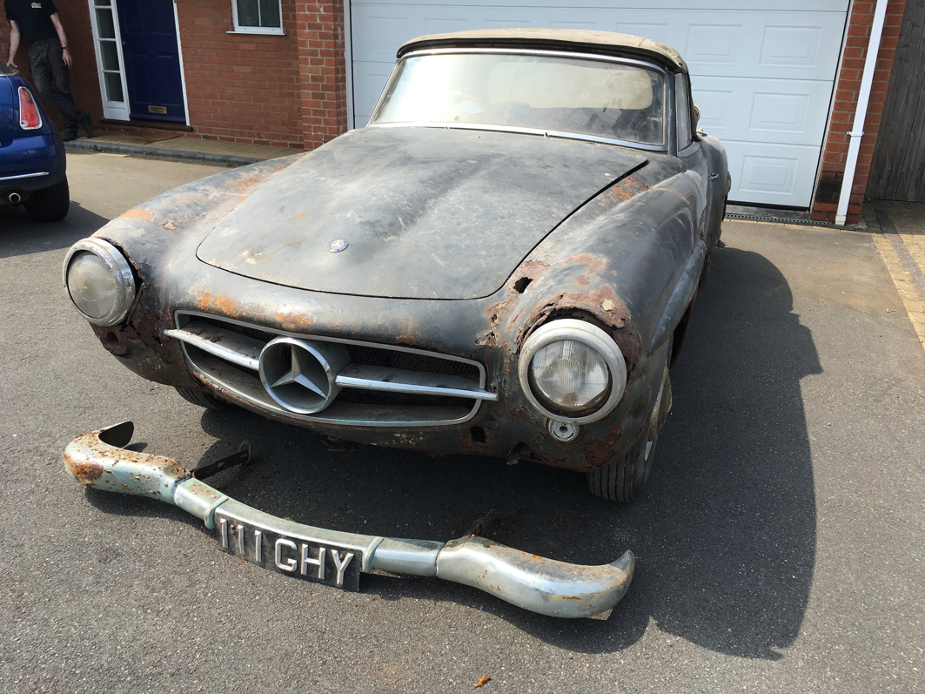
This wonderful time-warp 1960 Mercedes Benz 190SL found in an old garage in Solihull cane to auction with NO RESERVE with H&H Classics at the Imperial War Museum in Duxford, Cambridgeshire. It was estimated to sell for up to £50,000 as a restoration project.
The lovely 57 year old classic sports roadster was discovered by H&H Classics Motorcycle Department when on a mission to value bikes for sale.
A wonderful restoration project it is estimated to sell for as much as £50,000. In very good condition it could fetch around £150,000. The record price for a 190SL sold at auction stands currently at $209,000 (£164,000), a price achieved in 2015.
Classic does not get any more authentic than with the 1960 Mercedes-Benz 190SL. Designed as a more affordable version of its supercar 300SL (W198) big brother, the model is a classic roadster with a top speed of 175 km/h. It is capable of accelerating from 0 to 100 km/h in 11 seconds and packs a power of 120bhp. Featuring two doors, an open body, and a long, sleek bonnet, the 190SL is all about luxury and elegance. The interior is simple yet elegant with plush seats and a neat dashboard.
The 190 SL entered production in January 1955. Road & Track magazine said: “Very few new sports cars have been so eagerly awaited or so long in coming as the moderately priced SL version of the Mercedes-Benz,”
The model was a big hit in the USA, where many of the vehicles produced between 1955 and 1963 found homes. Prices of the 190’s older brother, the 300SL are now reaching in excess of £1,000,000. The equally attractive 190SL offers the elegance of 1960s Mercedes-Benz open top motoring at its very best.
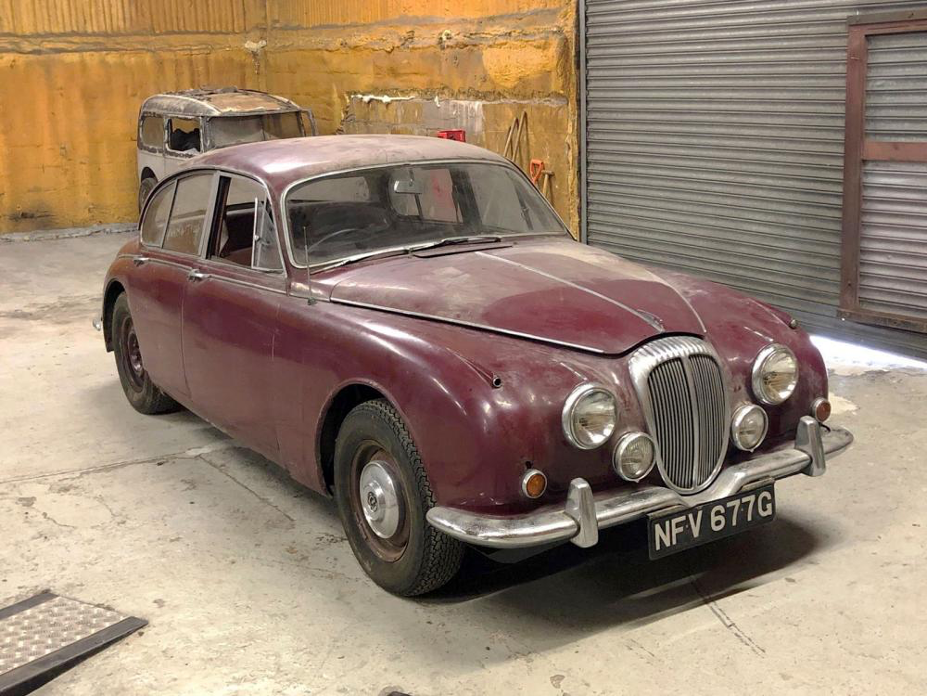
This barnfind Daimler V8 250 with power steering had been dry stored for 15 years, and had been in its current ownership since 1998, having had one previous owner.
It came with a very detailed handwritten service history from its previous owner starting from February 1974 from12,000 miles to 38,000 miles. There was also a previous MOT and handbook, original toolkit in the boot and full Daimler/Jag Service manual
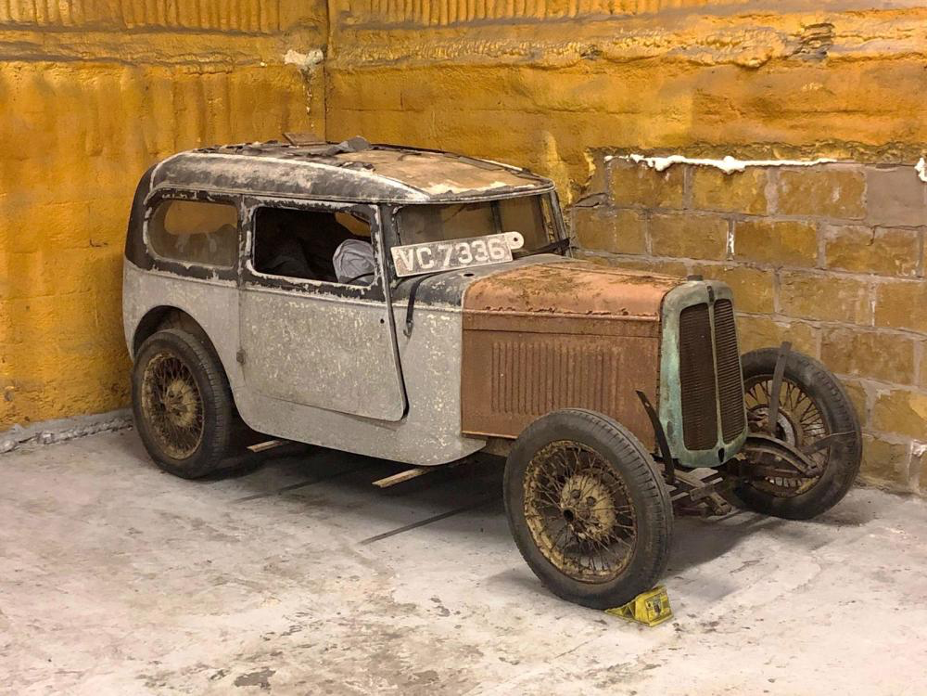
This 1930 Standard Swallow saloon (SS) 9hp - 1287cc barnfind had an estimate of £5,000 to £6,000.
The car seemingly frozen in time had been stored for many years and all parts believed to be inside the car still.
Take a look at the cars: https://www.youtube.com/watch?v=jbdm4Q_Mlq0
Two exceptionally rare right-hand drive Mercedes-Benz 300 cars unearthed after decades of dusty slumber in a recent barnfind in the north of England went under the hammer with H&H Classics at Duxford, Imperial War Museum.
A 1954 Mercedes 300 B Adenauer Cabriolet - which is thought to be one of just seven right hand drive versions built - is estimated to sell for £50,000 to £70,000. And its younger sibling, a 1956 300 C Adenauer Saloon is estimated at £8,000 to £12,000.
When the 300 B Adenauer Cabriolet was launched in 1951 it cost almost twice the price of the contemporary top-of-the-range Cadillac and was without doubt one of the world's most exclusive automobiles.
It was a very important design for Mercedes-Benz, one of the first all-new designs since the end of WW2. It first showed its face to the world at the Frankfurt Auto Show in 1951 and the 300's arrival re-established Mercedes-Benz in the front rank of prestige car manufacturers. This car’s message was that Mercedes had returned to the marque's tradition of building quality high-performance luxury automobiles.
The model’s 3-litre overhead camshaft six-cylinder engine – which in fuel-injected form also powered the 300SL sportscar – initially developed 115bhp but was boosted for the succeeding 300b and 300c variants before gaining fuel injection itself for the restyled 300d of 1957.
The 300 was custom built by Mercedes-Benz's most experienced craftsmen. It was luxuriously appointed and trimmed with materials of the highest quality. Fast and elegant, it was one of the very few contemporary vehicles capable of carrying six passengers in comfort at sustained high speeds.
It gained the name, 'Adenauer' after German Chancellor Konrad Adenauer, its most high-profile customer.
This was an important car for Mercedes-Benz as it marked a new beginning. With this car Germany announced that it was back in all seriousness with the aim of capturing a world market for luxury limousines.
Also pulled out of the dust in this wonderful barn discovery of two Mercedes was a 1956 300 C 'Adenauer’ Saloon which is estimated to sell for £8,000 to £12,000.
It was supplied new via Glovers of Ripon Ltd to the Tulketh Spinning Co Ltd of Preston. It was later purchased by Group Captain G.H. King in 1967 and has been in the current ownership since the 1970s.
James McWilliam, Sales Specialist at H&H Classics says: “To find one right-hand drive Adenauer would be considered a triumph but to find two parked up together shows that the owner knew and loved this marque with a passion. They would make a fabulous pair once restored with the Saloon still capable of keeping up with modern traffic and the Cabriolet doubtless garnering more than its fair share of concours invitations.”

A fine example of a car that burst onto the 1960’s racing scene – the Costin Nathan – was sold by H&H Classics after it emerged from a 45- year slumber in a garage. It was discovered by a house clearance company in Manchester and was sold by H&H at their Chateau Impney Hillclimb sale in the Midlands.
Racing as both a Spyder and GT in period, the two-seater now requires total restoration. Appearing to be substantially complete, it is estimated to fetch £25,000 - £30,000 and comes with a highly prized Hewland MK5 gearbox and Ford-based Twin-Cam engine in pieces.
Despite its short career, the Costin-Nathan proved to be a very capable racer. Surviving examples showcase Costin's unique talent for designing lightweight and very aerodynamic racers.
The car on offer is the original Works Prototype as raced with considerable success by Roger Nathan in 1966. Bought by the present owner (deceased) on 6th January 1967, without the initial Imp engine, it was given a Twin-Cam powerplant coupled to a Hewland Mk 5 transmission.
The driver was to be Chris Meek and the car was further modified with a hard-top to allow it to run as a GT. A large folder of correspondence charts the trials and tribulations of the next three years which added but a single class win at Snetterton in May 1967 to the two-seater’s impressive racing resume.
Former race-driver, John Markey, who runs the H&H Classics Hindhead Surrey operation, says: “It is an amazing restoration project and a true 'barn find' slumbering in the late owner’s garage for the last 45 years. This is quite a special car. It is the original Works Prototype as driven with success by Roger himself in ’66. I’m probably dewy eyed having raced one quite extensively in the 60’s. From a personal angle, the car as an Imp engined GT was a delight to drive, very quick in its class with neutral handling and my car did the Targa Florio, the Montjuich 12 hours and an event at Anderstorp in Sweden without any mechanical problems whatsoever.”
A collaboration between legendary engineer / aerodynamicist Frank Costin and gifted racer / tuner Roger Nathan, work on the nascent Costin-Nathan project began in 1965 with the prototype making its debut at the following January’s Racing Car Show. Like several of Costin’s previous designs, the newcomer featured a lightweight central monocoque tub fabricated from plywood with tubular steel sub-frames attached fore and aft. The resultant structure was not only commendably light but also reputed to be capable of handling 350hp! Not able to get quite that power from a Hillman Imp engine, Roger Nathan was nevertheless able to coax a reliable 100bhp / per litre out of the advanced all-alloy four-cylinder unit. Mid-mounted and canted over by 54 degrees, the 998cc powerplant was allied to a close-ratio gearbox. Weighing in at just 700lbs and boasting all-round independent suspension, four-wheel disc brakes and magnesium alloy wheels, the Costin-Nathan proved prodigiously fast.
Clothed in aluminium where its later production siblings used fibreglass, the Works Prototype achieved considerable success with Roger Nathan behind the wheel. Initially configured as a Spider, it recorded five class wins and a second-in-class during 1966; the undoubted highlight of which was Nathan’s victory in the Coupe de Paris on 25th September ahead of fierce Fiat-Abarth Works opposition. Keen to raise funds and with an entry for the Le Mans 24-hours already in his sights, Nathan sold the Works Prototype to G.M. Horsley on 6th January 1967. The latter engaged the services of Chris Meek as a driver, installed a more powerful Lotus Twin-Cam engine and had the bodywork updated by Nathan to enclosed GT specification. However, various teething problems and some bad luck meant that the Works Prototype was never as successful in its revamped guise; Chris Meek scoring but one further class win at Snetterton during 1967.
Retired after a few frustrating seasons, the Costin-Nathan remained in G.M. Horsley’s care and was left to slumber for almost half a century until being released by his estate. A unique proposition that if properly restored would be welcome at some of the world’s most prestigious historic race meetings, the Works Prototype is now coming to market for the first time in forty-nine years!

